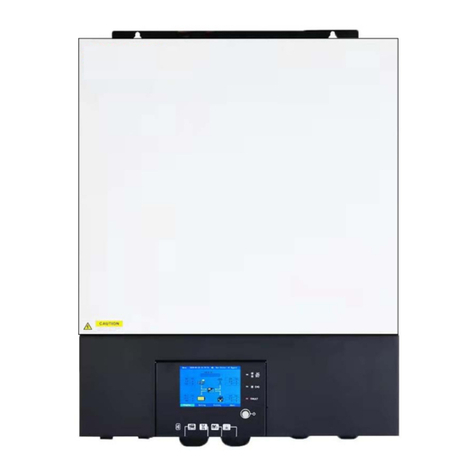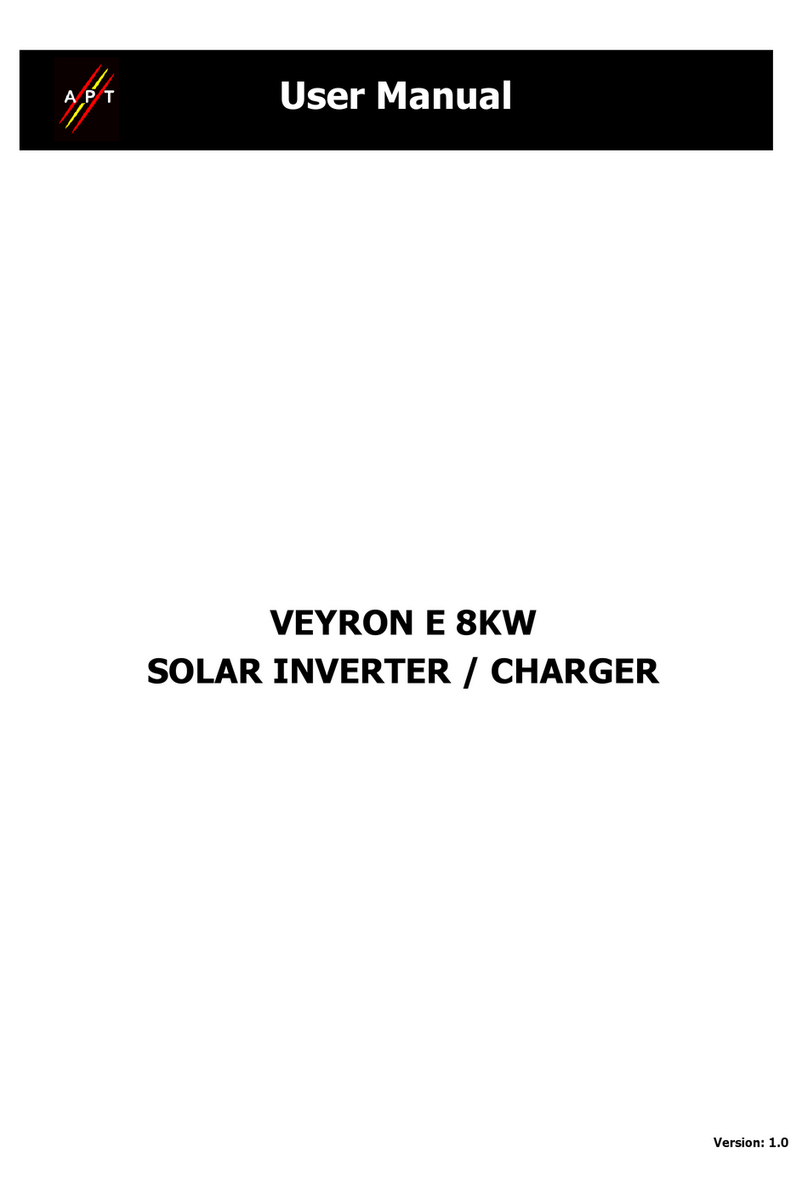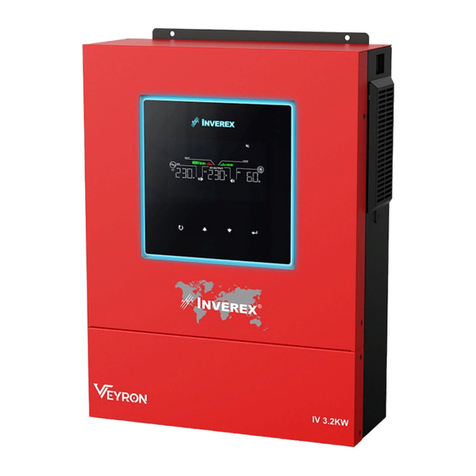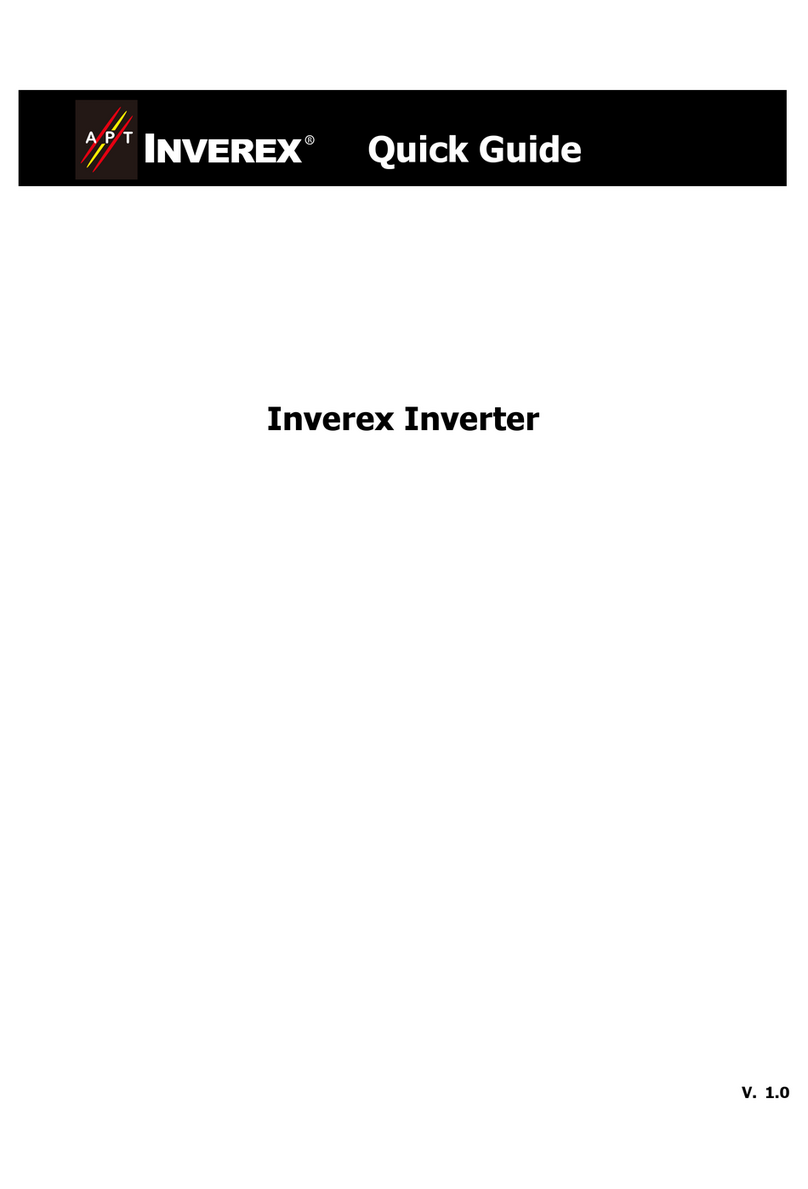1
1. Introduction
Thank you for purchasing the solar inverter. This simple solar inverter is designed to power your home
appliances or precious 3C electronics. It also can handle motor-type loads with high surge power such as
vacuums, small freezers, or drills. With built-in solar charger, it can convert solar power to battery power and
provide continuous power to connected equipment during night time.
2. Important Safety Warning (SAVE THESE INSTRUCTIONS)
Before using the inverter, please read all instructions and cautionary markings on the unit, this
manual and the batteries.
General Precaution-
CAUTION! The unit is designed for indoor use. Do not expose this unit to rain, snow or liquids of any type.
CAUTION! To reduce risk of injury, only use qualified batteries from qualified distributors or manufacturers.
Any unqualified batteries may cause damage and injury. Do NOT use old or overdue batteries. Please check the
battery type and date code before installation to avoid damage and injury.
WARNING! It's very important for system safety and efficient operation to use appropriate external battery
cable. To reduce risk of injury, external battery cables should be UL certified and rated for 75°C or higher. And
do not use copper cables less than 10AWG. Below is the external battery cable reference according to system
requirements.
CAUTION! Do not disassemble the inverter. Contact with the qualified service center when service or repair is
required.
WARNING! Provide ventilation to outdoors from the battery compartment. The battery enclosure should be
designed to prevent accumulation and concentration of hydrogen gas at the top of the compartment.
CAUTION! Use insulated tools to reduce the chance of short-circuit when installing or working with the inverter,
the batteries, or other equipments attached to this unit.
CAUTION! For battery installation and maintenance, read the battery manufacturer's installation and
maintenance instructions prior to operating.
Personnel Precaution -
CAUTION! Careful to reduce the risk or dropping a metal tool on the batteries. It could spark or short circuit the
batteries and could cause an explosion.
CAUTION! Remove personal metal items such as rings, bracelets, necklaces, and watches when working with
batteries. Batteries can produce a short circuit current high enough to make metal melt, and could cause severe
burns.
CAUTION! Avoid touching eyes while working near batteries.
CAUTION! Have plenty of fresh water and soap nearby in case battery acid contacts skin, clothing, or eyes.
CAUTION! NEVER smoke or allow a spark or flame in vicinity of a battery.
CAUTION! If a remote or automatic generator start system is used, disable the automatic starting circuit or
disconnect the generator to prevent accident during servicing.































